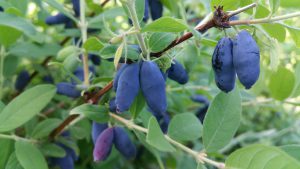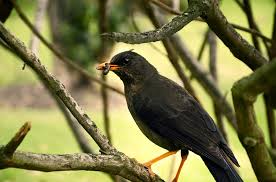Growing, caring for, and harvesting honeyberries

Over the past several weeks we have looked at how to grow berry varieties and what so amazes me is the number of berries that can be grown in our home gardens that are filled with so many vitamins besides their healing benefits.
Honeyberries is next on the list as we take a look at how to grow these bushes successfully and reap a good harvest because who would want to invest in a project spending money and putting in all that effort without getting the results they are looking for.
So my goal is to help you to reap a good harvest as you garden successfully by following these steps that are so simple. So let’s connect with nature as we give nature a helping hand because by helping nature we will be helping ourselves.
Berry variety
- Bluebird
- Blue velvet
- Berry blue
- Blue belle
- Blue forest
Growing honeyberry plant
- When growing these berries the first thing to consider is location. Therefore look for a location that gets plenty of sunlight in northern areas and partial shade in the south will help to achieve success.
- The soil should be well-drained soil that is moist with a ph of 6.5. Also adding organic matter will go a long way in helping your bushes
- The spacing of these plants should be 6-8 feet apart in rows mix up the varieties for proper pollination
- Give sufficient water but don’t overwater
- Adding a 2-4 inch layer of mulch around the plants base will help to keep weeds down as the mulch decomposes will add nutrients to the soil
- Fertilizer your bushes based on the soil test
Honeyberry height and width
The growing height of this shrub can be anywhere from 3-7 feet along with the width measuring the same depending on the variety.
Insect pest and diseases of honeyberry bushes
Honeyberry bushes have few insect pests and diseases which is a good thing because that makes growing these berries easier But I am sorry to say birds can become a pest by eating your berries.

The solution to bird pest
Netting material
To discourage birds from eating your berries using a netting material over your plants can be effective in keeping birds away.
Electronic devices
Electronic devices can be set up to keep birds away also. Check with your garden center
Repellents
Using repellents can also keep birds away. Repellents such as Eco bird 4.0, PiGNX, etc… will help
Trapping
As a youngster, my elder brother and I loved to catch birds. We would make bird traps out of pieces of wood where the front of the trap was propped with a stick, tie a fishing line on the stick that kept the trap propped up, baited the trap with bread crumbs or uncooked rice. We always had success with our bird catching method.
Harvest time
Like I often say now comes the really great part where you get to eat the fruits of your labor. Honeyberries can be harvested from late May to early July. Wait until the fruits turn blue before eating. Berries can be shaken from the tree or hand-picked. The rewards are sweet as you enjoy these berries that are filled with antioxidants and other nutrients
Note: Honeyberry makes a great hedge or will do nicely in your edible garden
The final word
As you can see these berries are easy to grow and of great benefit so go ahead and make these bushes a part of your garden you will be happy that you did as you reap a sweet harvest.
About the author
Norman loves being in the garden, both at home and for his job....
he is 'Natures Little helper' being outdoors, growing his vegetables and flowers from an early age.
Now having spent over 22 years in the profession he want to give some of his knowledge to others...
his vast array of hints and tips you will find scattered over this site will help you no end growing plants in your garden.

I have never had a honey berry before. I am looking for ideas for along the front of my house that does get partial shade (I live in Florida). Sounds like I have everything right. I liked them for how pretty they are with the fruit. I had not known I could eat it as well. Do you know what other fruit they might be similar to taste with?
Hello good friend so good to see you. Hope all is well with both you and your family. Honeyberries has a similar taste to blue berries hope this helps. Wishing you all the best. Have a good day.
Honey Berries are best in zones 2 through 4 and can possibly be grown in zones 5 through 9, but I haven’t found too many articles encouraging it as it takes more of your time to water carefully through the hot season. But if you have the partial shade and plenty of mulch to keep the roots cool, along with time to water and fertilize three times a year, you should be able to get a crop. It just won’t be as prolific, but, hey. These are honey berries and any amount is worth the effort!
This Honey Berry plant sounds like an option I might share with my wife. We usually improve our yard every summer and this sounds like it would be a good addition.
However we live way up North in Duluth MN. The winters are long and cold and the summers are short and humid. Would this plant thrive in our location?
Thanks.
Hello it is so good to meet you and I am so happy that I could help. One way to overwinter your plant is to use mulches, straws that comes in bails or leaves. Cover the roots with one of these material to keep them from freezing or if grown from a container move plant on the indoors to places like the basement, the garage or other places that gets some light and that is cool-warm. Plants can be returned to the outdoors once the cold season passes.
I know this is an old post, but for Ty Hook and Matt’s Mom, to answer your questions if you’re still curious: Yes, Ty, blue honeyberry (aka Siberian Blue Honeysuckle) should thrive in Minnesota or anywhere with a climate that has cold winters and summers usually associated with zones 2-8. Matt’s Mom, sorry, they won’t do well in Florida unless you’re in northern FL zone 8, because they need a substantial period of sustained below-freezing cold each year to keep them dormant long enough to survive and produce berries. The further north, the better they do.
When I lived in Alaska zone 2-3, I had half a dozen blue honey berry bushes of 3 or 4 different varieties. Your nursery of choice should be able to suggest which kinds you need for cross pollination. I ordered mine from Raintree in Washington state. I planted them in a mix of half peat, half garden soil, with wood chip mulch around them until they got established. They were tiny (bare root stems a few inches tall) but grew fast. By Fall they were more than 2 feet tall. All but one survived the first Alaskan winter, even though they were in an area exposed to the worst winds, and I never did anything to protect them. The ones that survived were spectacular. By the end of the second year they were 4 feet tall. They stabilized around 5 feet tall the next year, and were as big around as they were tall. We got so. many. berries!
The berries are 1/2″ to 1″ long and taste like a cross between a very large wild blueberry and a huckleberry. They make fantastic muffins, pancakes, and pies. Just add a little more sugar than you would for store-bought blueberries if you prefer a little less tartness.
When you plant them, make sure you pay attention to the planting distance. Closer than 5 or 6 feet and they’ll get very crowded within a couple of years. If you want more bushes, they’re very easy to propagate from cuttings in the spring. Just take a few tender new shoots about 4 to 6 inches long in earliest Spring, and stick them in a glass of well water or filtered water (no chlorine!) near a sunny window. 🙂 Treat cuttings as potted plants for a couple of months, and stick ’em in the ground in early Fall.